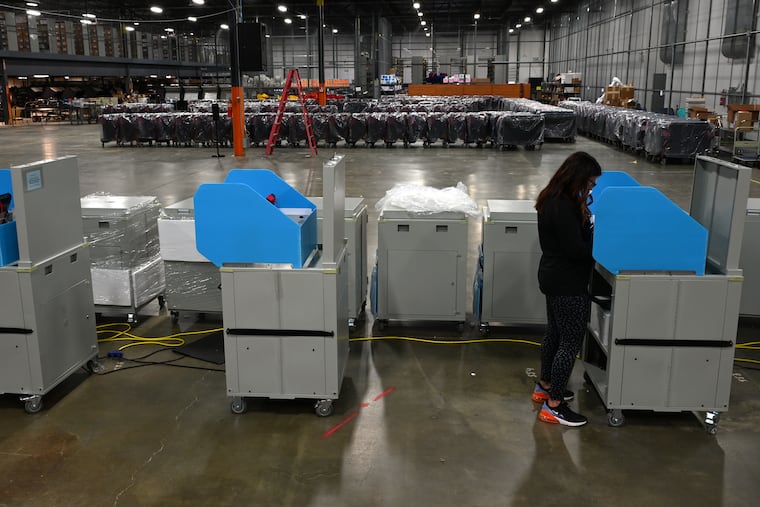The crowded primary field for New Jersey governor makes it clear: The Garden State needs ranked choice voting
With five Republican candidates and six Democrats, a relatively small number of voters can determine the nominees from each party. But what if voters could rank the field in order?

Primary elections are supposed to help a political party find its strongest possible candidate. But in New Jersey’s race for governor, Democratic and Republican voters will use an antiquated voting rule that may put their nominee in a poor position to win in November.
Because New Jersey is unusual (along with Virginia) in holding statewide elections in years following a presidential election, many observers nationwide will interpret the outcome as a referendum on the Trump administration and an early read on the 2026 midterms. But if Democrats or Republicans put forth a flawed candidate, surprises can happen.
The nomination contests on both sides heading into the Garden State’s June 10 primary remain undecided and divisive. In the current system, whoever gets the most votes wins. But Republicans will choose between five hopefuls; Democrats from six. This means that well under a majority of voters can determine the nominee. Imagine if either nominee wins with just 20% support. He or she will have quite a task energizing voters and unifying their party by November.
This situation cries out for ranked choice voting, an incredibly useful tool in any election with more than two candidates. It allows voters to rank the field in order — first, second, and so on.
If nobody wins a majority of voters’ first choices, the race goes to an “instant runoff.” The last-place candidates are eliminated until one candidate is over 50%. If a voter’s first choice is out of the running, their vote simply counts for their next choice.
Having lots of choices potentially gives voters influence, but it also creates complications. Voters have to do an impossible calculus: Do they vote for whom they like most, risking that the candidate they like least wins? It’s not great for parties, either, if a divided field delivers a weak nominee whom as many as four out of five voters didn’t support.
Democrats, in particular, are in a tough position. Recent polls from Emerson and MDW do not find anyone catching fire yet.
The race features two members of Congress (Mikie Sherrill and Josh Gottheimer), two mayors promising to change the state party machine (Ras Baraka and Steven Fulop), teachers’ union leader Sean Spiller, and old-time party boss Steve Sweeney. Even if voters mostly wanted a major theme, if their support is split, then a different faction could outvote them simply by sticking with one candidate.
Recent polls show “undecided” in first place, at 27%. The state Democratic establishment has rallied behind Sherrill, but she still only polls at 24%. Close behind are Jersey City Mayor Fulop and Newark Mayor Baraka in the 12%-14% range, followed by Spiller, Baraka, and Gottheimer in the 8%-9% range.
With these numbers, political incentives encourage Democratic candidates to turn up the rhetoric. Since as little as 25% support is plausibly enough to win, the race has taken a decidedly negative turn.
Baraka has accused Sherrill of being “tone deaf and completely out of touch” about systemic racism.
Sherrill, meanwhile, has taken aim at Fulop over what she calls a “long history of corruption.”
Fulop fired back by attacking Sherrill for insider training and misrepresenting military service.
The whole thing is looking like the three-way standoff in the movie Reservoir Dogs. And that shoot-out turned out poorly for everyone involved.
Ranked choice voting would create very different incentives. Instead of building up lines of attack that can be used against them later, Democrats would have to appeal for voters’ second and third choices, and build a coalition that adds up to more than 50%.
New Jersey Democrats might take a lesson from Virginia, where Republicans faced a similar dilemma in 2021.
With four candidates from different ideological wings and no promise of an easy reunification, Republicans turned to ranked choice voting.
They found nice things to say about each other even when they disagreed, and eventually nominated Glenn Youngkin. And in the fall, they retook the governor’s mansion.
Here in New Jersey, Republicans don’t have this problem, at least not this year.
Jack Ciattarelli, who came within three points of beating Gov. Phil Murphy in 2021, is back for a return engagement.
With an endorsement from Donald Trump and a wide lead over his challengers, Ciattarelli seems likely to avoid a divisive primary. But future nominating contests aren’t guaranteed to be harmonious. For them, too, ranked choice voting would ensure a majority winner and a tighter-knit party.
New Jersey’s primary election procedures for statewide offices are largely governed by state law rather than party bylaws.
Making the switch to ranked choice voting would likely require statutory changes at the state level. A bill from State Sen. Andrew Zwicker proposes to allow ranked choice voting throughout the state.
Reform in Trenton is possible. New Jersey recently ended the infamous county-line ballot system. With that method of controlling voters gone, legislators need a way to avoid the destruction that comes with a divisive primary.
Ranked choice voting provides an attractive solution, one that helps every party put forth its strongest candidate.
Sam Wang, a professor at Princeton University, is the president of the Electoral Innovation Lab. David Daley, the author of “Antidemocratic,” is a senior fellow at FairVote.